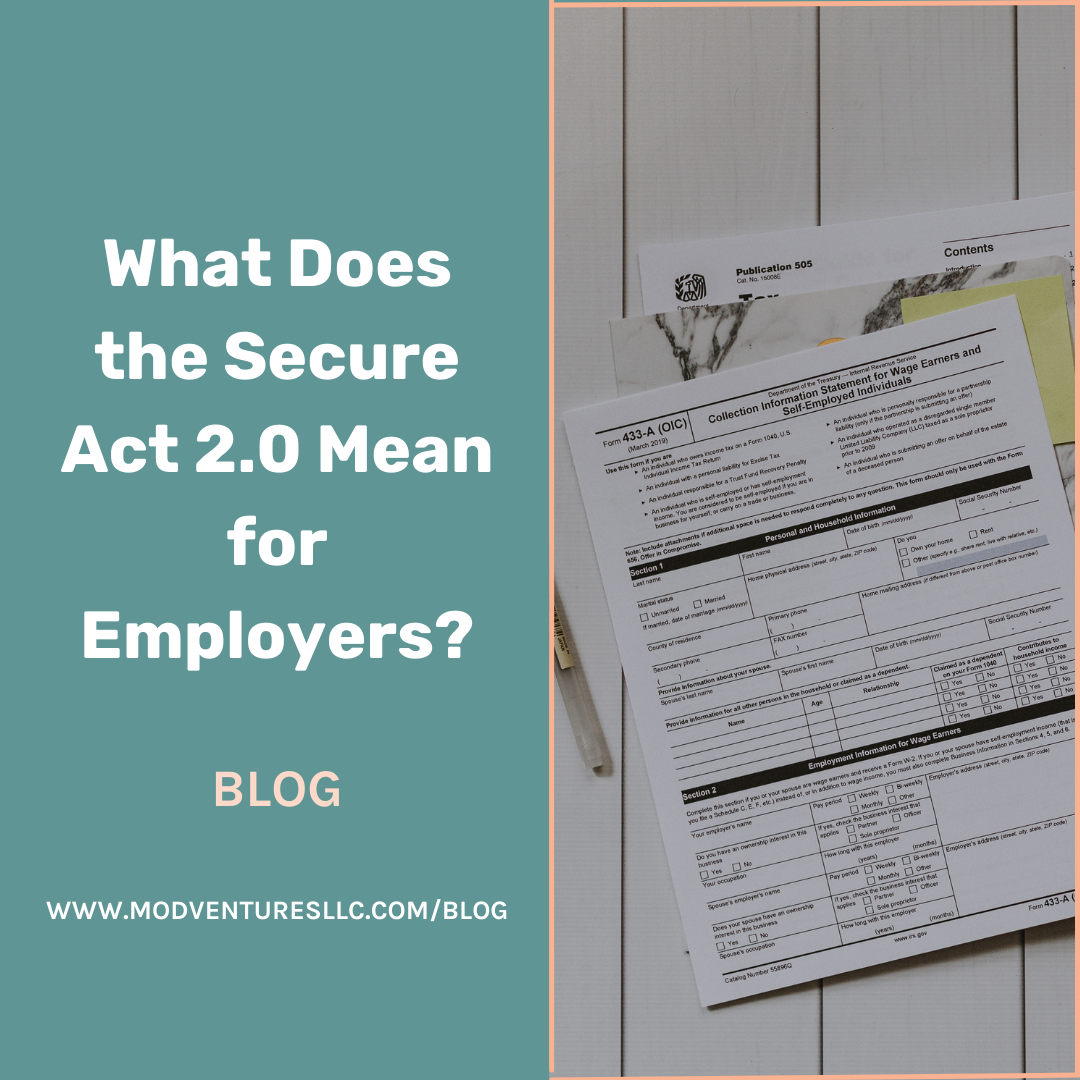Officially established as a law on December 29th, 2022, the SECURE Act 2.0brought significant changes to 401(k) plans, mainly the 401(k) plans sponsored by small businesses.
With inclusions that involve expanding coverage, increasing retirement savings, and clarifying retirement plan rules, businesses should quickly familiarize themselves with the changes this act brings by its effective date. So, what does the Secure Act 2.0 mean for employers?
What is the Secure Act 2.0?
Built on the foundation of the SECURE Act of 2019, the Secure Act 2.0 increase overall coverage and retirement savings. Additionally, it will make major changes to distribution rules, participant disclosures, and plan testing procedures. For our purposes, we’ll focus primarily on the 401(k) provisions and the other most notable changes that will affect employers.
Start-Up Tax Credits
They are increasing the tax credit for starting a new retirement plan from 50% to 100% for employers with up to 50 employees. These small businesses can earn additional credit for making employer contributions with a per-employee cap of $1k. This credit is phased out for employers with 51 to 100 employees and is applicable 100% in the first and second years, 75% in the third year, 50% in the fourth year, and 25% in the fifth year.
Starter 401(k) and 403(b) Plans
Thanks to SECURE 2.0, employers with no retirement plan will now have starter 401(k) or 403(b) plans. The starter plans limit the salary deferrals to a max of $6,000 with the possible addition of catch-up contributions for those over 50 years of age.
Employers will need to have automatic enrollment of employees, but the employees may opt out. Employers with 51-100 employees may qualify for a similar program, but not the exact.
Solo 401(k) Plan Options
With the new updates, SECURE 2.0 supports parity for a solo 401(k) plan with IRAs. This applies for a sole proprietor who is the only employee of the business. They can make a deferral electrion for compensation contributions to their 401(k) plan until the due date for the tax year’s income tax return – but only for the first year of the the plan. This does not allow for extensions.
Reducing Top-Heavy Contributions for Employers
Small businesses can now adopt plans thanks to the lessening of top-heavy contributionts from employers. These traditionally top-heavy rules have been modified for plan years that begin after 2023 to allow excludable and non-excludable employees to be tested separately.
How Does SECURE Act 2.0 Affect Employers?
If you’re the owner of a small business, you’re options for retirement planning have greatly expanded to allow more options and flexibility for you and your employees. New plans allow better benefits which leads to employees sticking around longer with a higher job satisfaction.
To determine which options are available for your small business and are right for you, reach out to ModVentures today!
You May Also Love
CLOSE






